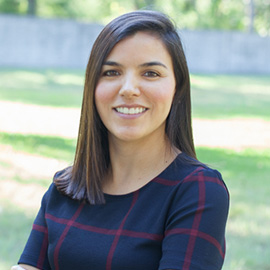When I first moved to Austin, I was committed to not driving and using public transit. However, it quickly became apparent that public transit was not a viable option for me, given the time it took to get to work from my affordable housing option. Now, it’s even harder for me to use public transit. With two small children, and living close to 10 miles away from downtown (the place we could afford) , it would be extremely difficult and inefficient time-wise for us to move around on public transit.
I believe long-term investments in transit are vital for our community, so we can all efficiently get to work, schools, grocery stores and parks, decreasing our reliance on cars. Beyond transit, we’ve got to be developing other transportation options, from active transportation to protected bike lanes and urban trails.
Living in East Austin often feels like living in a different city altogether. Even though I live close to a grocery store, there is no safe way for my kids and I to get there by walking or biking. I live close to a school and we have missing sidewalks that make it unsafe for my kids and I to walk on busy roads. There are not enough east-west public transit routes.
To maximize transit ridership and decrease reliance on cars:
- I believe long-term investments in public transit are vital for our community – we can’t build our way out of congestion with roads alone. Growing in a compact way and decreasing sprawling developments will allow our transit to reach the critical ridership needed to expand service. We must work towards more public transit investments (e.g. by supporting a 2020 transportation bond and lobbying CTRMA to fund multimodal transportation options).
- We should be investing in high-capacity transit options, like dedicated transit corridors. In District 1 in particular, we should be developing our own bus-rapid transit (BRT) line.
- As a Council Member I will look at all the work already underway – from the City’s Sidewalk and Bicycle Master Plans, to Vision Zero and CapMetros’ Project Connect to help bring these projects to fruition.
- In general, we should be encouraging CapMetro to increase their ridership by increasing quality of transit service by ensuring an effective network of routes. Currently we have frequent north-south routes but not enough east-west routes. We need a better network overall so that riders can access all parts of the city throughout the day.
- We should also be encouraging CapMetro to use its limited transit dollars more efficiently. CapMetro should be developing better and more efficient routes, tied directly to ridership data, instead of creating inefficient routes like the Red line – a route estimated to have less than 2,000 weekday riders, with an estimated annual taxpayer subsidy at $15K per rider.

